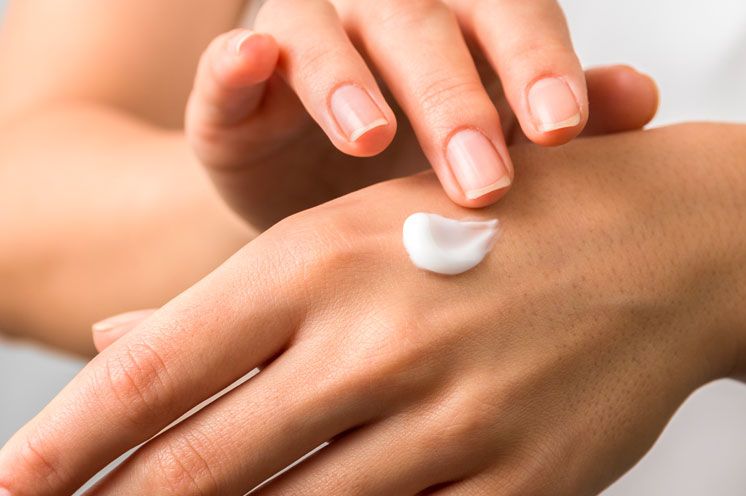Should everyone use a moisturiser?
Professor Sarah Rogers, Dermatologist, gives us the facts.
Professor Sarah Rogers, Dermatologist, gives us the facts.
Should everyone use a moisturiser?
Professor Sarah Rogers, Dermatologist, gives us the facts.

Should everyone use a moisturiser? The simple answer is no. The cosmetic industry might have us believe otherwise, but if your skin is normal and smooth to the touch, no moisturising is needed. If one is necessary, however, what moisturiser should one chose? I would advocate something from the pharmacist’s shelves. He/she will have everything you could possibly need, though it won’t have the attractive packaging and alluring advertising seen on the cosmetic counters. Most of the latter is aimed at ladies’ faces but if you have to moisturise all over, it’s back to the pharmacy where products can be bought in bulk.
The next thing to consider is whether to use a cream or a lotion? Or what about an ointment? Let’s consider first what a moisturiser does. It helps restore the outer layer stratum corneum (SC) to normal function and so retain water in the skin, and maintain the mechanical properties of the skin, e.g., strength, flexibility and elasticity.
Creams consist of an oil and water mix. An emulsifier is added to give the product stability. To prevent bacterial growth, preservatives are also added, e.g., parabens. Expensive cosmetic creams usually also contain a perfume (‘fragrance’). And so you can see how allergic contact dermatitis to a cream may occur since it contains a number of chemicals.
Lotions have a higher water content than a cream, are easy to apply but are less effective, and are not so effective for really dry skin.
Ointments contain no water, they are pure grease. How do they work if they have no water content? By repairing the stratum corneum and sealing in the water that we otherwise lose from our skin by insensible sweat or perspiration. Ointments are used for very dry skin conditions such as atopic dermatitis or ichthyosis. You will find them in great quantities – more than creams – in the dermatology nurse specialist’s supply cupboard. The most common one is white soft paraffin BP* (Vaseline is an example); emulsifying ointment and Silcock’s base are other ointment emollients; they contain emulsifiers and can be used with water as soap substitutes.
Urea is a chemical that is the means in our bodies of clearing nitrogen from protein breakdown through the kidneys. Its use as a moisturiser is not new: a famous dermatologist of the time, Al Kligman, wrote in 1957 that urea was a topical therapy that was long forgotten but was often useful when new ‘miracle’ applications failed. Urea has never gone away, and now newer formulations are available, which make it very easily tolerated. Used in concentrations of less than 10% urea is effective for dry skin (xerosis), but for thicker, more hyperkeratotic conditions like ichthyosis and localised hyperkeratosis of the heels, concentrations above 10% may be necessary. Urea has also proved effective in reducing scaling in psoriasis. Your pharmacist or doctor can advise as to what is the correct formulation for your particular skin ailment.
Shower and bath gels should always be formulated with soap substitutes and never soap itself for dry skin conditions.
Remember that, in many dry skin conditions, a moisturising preparation forms only part of your skin treatment regimen. You may also need to use topical steroid cream or ointments prescribed by your doctor.
* British Pharmacopoeia